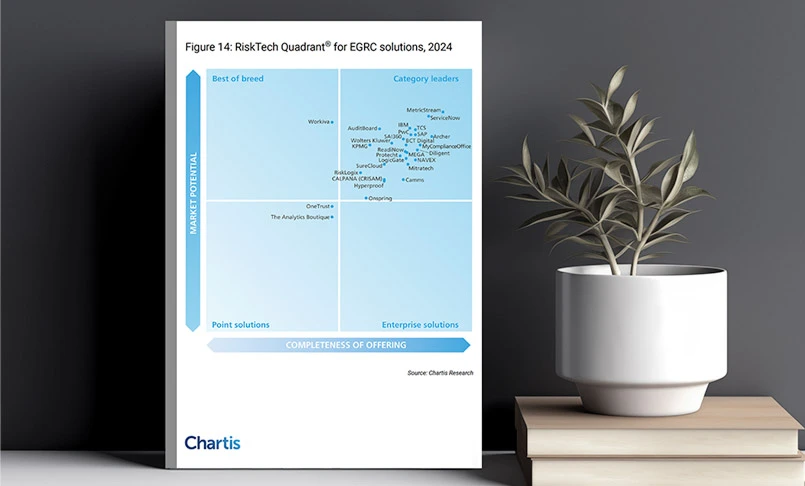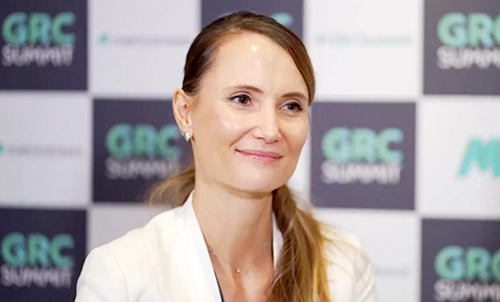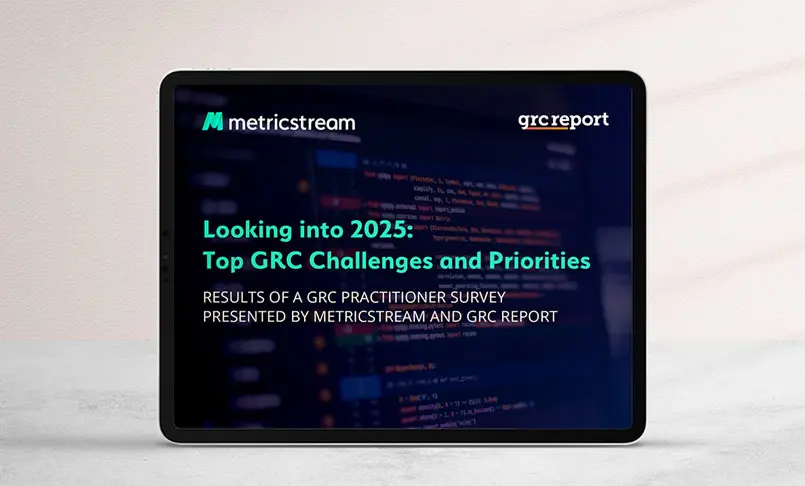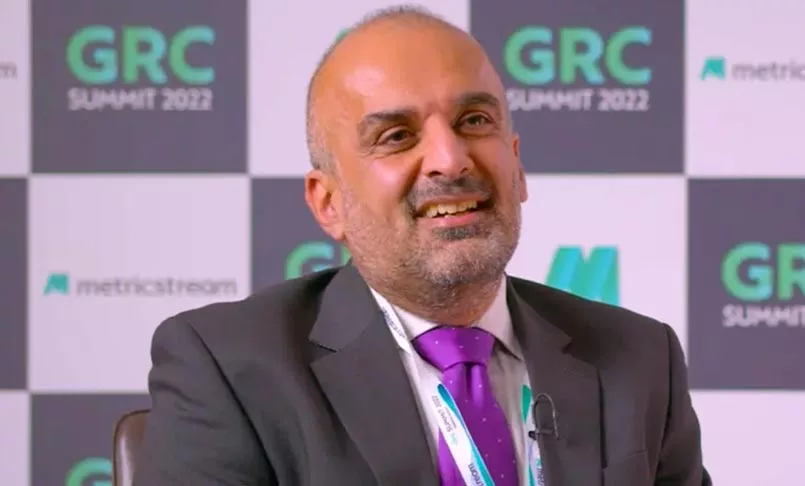Introduction
In an era of ever-evolving regulatory landscapes, organizations across industries face the challenge of adhering to complex compliance requirements. Compliance monitoring, a crucial component of organizational governance, ensures that businesses remain aligned with legal, regulatory, and internal company standards. Effective compliance monitoring not only protects businesses from penalties but also strengthens their reputation, operational efficiency, and stakeholder trust.
This blog delves into the core aspects of compliance monitoring, offering insights into its significance, mechanisms, challenges, and strategies for implementation.
Key Takeaways
- Compliance monitoring ensures adherence to laws, regulations, and internal policies.
- Compliance monitoring is a collaborative effort involving compliance officers, management, and staff.
- Industries including but not limited to healthcare, finance, and manufacturing showcase diverse applications of compliance monitoring.
- Common hurdles include evolving regulations, resource constraints, and technological barriers. Developing a robust compliance monitoring system is essential for long-term success.
What Is Compliance Monitoring?
Compliance monitoring refers to the systematic process of tracking and evaluating an organization’s adherence to regulatory requirements, internal policies, and industry standards. This function involves continuously assessing operations, practices, and processes to identify non-compliance risks and implement corrective measures.
Compliance Monitoring Examples
Compliance monitoring manifests differently across industries due to varying regulatory requirements:
- Healthcare: Monitoring adherence to HIPAA regulations to protect patient information.
- Finance: Ensuring compliance with anti-money laundering (AML) and Know Your Customer (KYC) guidelines.
- Manufacturing: Tracking compliance with workplace safety standards like OSHA regulations.
- Technology: Ensuring adherence to data privacy laws such as GDPR or CCPA.
- Retail: Monitoring compliance with product labeling and advertising standards.
Each industry tailors its compliance monitoring processes to align with its specific regulatory environment and operational needs.
Who Is Responsible for Monitoring Compliance?
Compliance monitoring is a shared responsibility within an organization, involving compliance officers, management, and staff. Some of the key personnel involved are:
- Compliance Officers: Oversee the design, implementation, and effectiveness of compliance programs.
- Management: Foster a compliance-driven culture and allocate resources for monitoring activities.
- Internal Audit Teams: Conduct regular audits to assess adherence and identify gaps.
- Employees: Play a critical role by adhering to policies and reporting violations.
External entities such as regulators, auditors, and consultants may also contribute by evaluating the organization’s compliance posture and recommending improvements.
Why Is Compliance Monitoring Important?
The importance of compliance monitoring extends beyond avoiding fines and legal consequences. Its’ benefits include:
- Risk Mitigation: Proactively identifies and addresses potential compliance risks.
- Reputation Management: Enhances stakeholder trust and protects the organization’s brand image.
- Operational Efficiency: Streamlines processes and minimizes disruptions caused by non-compliance.
- Regulatory Adaptation: Helps organizations stay ahead of regulatory changes and industry trends.
- Employee Accountability: Promotes a culture of ethical conduct and accountability.
Effective compliance monitoring translates into long-term financial and operational benefits, safeguarding the organization’s sustainability.
How Does Compliance Monitoring Work?
The compliance monitoring process involves a series of structured steps designed to ensure that an organization stays aligned with regulatory and internal standards. Each step plays a vital role in building a robust compliance framework:
- Risk Assessment Identifying high-risk areas is the foundation of compliance monitoring. Organizations must evaluate operational, legal, and financial risks based on industry-specific regulations and internal policies.
- Example: A financial institution may focus on anti-money laundering (AML) risks, while a healthcare provider prioritizes data privacy under HIPAA.
- Process: Conduct detailed risk analyses, leveraging historical data, industry benchmarks, and input from stakeholders to determine areas of vulnerability.
- Policy Development Establishing clear and actionable compliance policies ensures that all employees understand their roles in maintaining compliance.
- Example: A manufacturing company might develop policies on workplace safety, aligning with OSHA guidelines.
- Process: Collaborate with legal, operational, and HR teams to draft policies that reflect both regulatory requirements and organizational objectives.
- Monitoring Mechanisms Using tools and technologies to track compliance in real-time allows organizations to detect potential violations proactively.
- Example: Automated dashboards track employee adherence to mandatory training programs.
- Process: Implement compliance management software to monitor data trends, generate alerts for deviations, and simplify reporting.
- Regular Audits Periodic audits assess the effectiveness of compliance measures and identify areas for improvement.
- Example: A retail company conducts quarterly audits to ensure accurate product labeling under consumer protection laws.
- Process: Engage internal or external auditors to evaluate operational processes, review documentation, and recommend corrective actions.
- Training and Communication Educating employees fosters awareness and encourages adherence to compliance standards.
- Example: A tech company organizes GDPR workshops to help employees understand best practices for handling data.
- Process: Offer role-specific training sessions, distribute compliance handbooks, and maintain open communication channels for queries.
- Reporting and Remediation Timely reporting and resolution of compliance issues are critical to mitigating risks and avoiding penalties.
- Example: An energy firm documents an environmental breach and implements immediate corrective measures to comply with EPA standards.
- Process: Develop a clear protocol for reporting violations, investigating causes, and implementing preventive measures.
By following this structured approach, organizations can ensure consistent compliance while adapting to regulatory changes and operational demands.
The Challenges of Compliance Monitoring
Although essential, compliance monitoring is not without its challenges. Addressing these issues requires strategic planning, resources, and commitment:
- Regulatory Complexity Regulations often vary across jurisdictions, industries, and organizational structures, creating a complex landscape for compliance teams.
- Example: A global company must navigate differing data privacy laws like GDPR in Europe, CCPA in California, and PIPEDA in Canada.
- Solution: Maintain a dedicated legal team or consultant network to stay updated on regulatory changes and ensure alignment.
- Resource Constraints Budgetary limitations and understaffing often hinder the effectiveness of compliance programs.
- Example: A small business may lack the funds to invest in sophisticated compliance software or hire dedicated compliance officers.
- Solution: Focus on prioritizing high-risk areas and leveraging cost-effective tools to optimize monitoring.
- Technological Barriers Outdated or incompatible systems can complicate data integration and compliance tracking.
- Example: Legacy systems in healthcare may not support real-time tracking of patient data for HIPAA compliance.
- Solution: Gradually upgrade systems, ensuring compatibility and user-friendliness for all stakeholders.
- Cultural Resistance Employees may perceive compliance initiatives as bureaucratic or overly restrictive.
- Example: Resistance to workplace safety measures due to a lack of understanding about their importance.
- Solution: Foster a culture of compliance by highlighting its value in protecting both employees and the organization.
- Data Overload Managing vast volumes of compliance-related data can be overwhelming for organizations.
- Example: A financial firm processing millions of transactions daily may struggle to monitor AML compliance manually.
- Solution: Use AI-driven tools to analyze data trends, flag anomalies, and generate actionable insights.
Addressing these challenges requires a proactive approach that balances regulatory demands with organizational capabilities.
Creating a Compliance Monitoring Plan
A comprehensive compliance monitoring plan is essential for maintaining accountability and ensuring organizational success. Below is a detailed framework for developing one:
- Define Objectives Clearly articulate the purpose of the compliance monitoring plan to align it with organizational goals.
- Example: A healthcare provider aims to minimize patient data breaches and improve compliance with HIPAA.
- Action Step: Draft a mission statement that outlines key compliance objectives and measurable outcomes.
- Assess Risks Identify and prioritize compliance risks to allocate resources effectively.
- Example: An e-commerce platform might focus on consumer protection laws and cybersecurity risks.
- Action Step: Use risk assessment tools to evaluate and categorize risks by severity and likelihood.
- Allocate Resources Assign specific roles and budgets for compliance activities to ensure accountability.
- Example: Designate compliance officers, legal advisors, and IT staff to oversee distinct areas.
- Action Step: Establish a cross-functional compliance team with defined responsibilities and reporting lines.
- Leverage Technology Invest in tools that streamline compliance monitoring and reporting processes.
- Example: Use cloud-based compliance software to automate tracking and generate alerts for violations.
- Action Step: Evaluate and implement technology solutions that align with organizational needs and scalability.
- Establish Procedures Develop clear protocols for tracking, reporting, and addressing non-compliance.
- Example: A manufacturing company may define steps for reporting and investigating workplace safety incidents.
- Action Step: Document procedures in a centralized compliance manual accessible to all employees.
- Train Employees Provide targeted training to ensure employees understand compliance requirements.
- Example: Conduct phishing awareness workshops to reduce cybersecurity risks in an IT firm.
- Action Step: Develop role-specific training modules and track participation through an LMS (Learning Management System).
- Review and Update Regularly evaluate the effectiveness of the compliance monitoring plan to address new challenges.
- Example: A financial institution updates its AML procedures to reflect new regulatory changes.
- Action Step: Schedule annual reviews of compliance policies and procedures, involving stakeholders at all levels.
Implementing this plan ensures that organizations can proactively manage compliance risks, adapt to regulatory changes, and foster a culture of ethical accountability.
Why MetricStream?
Compliance monitoring is an indispensable element of modern business operations, ensuring organizations remain aligned with regulatory and ethical standards. While it poses challenges, a proactive and well-structured approach can transform compliance monitoring into a strategic advantage. By fostering a culture of compliance, leveraging technology, and addressing challenges head-on, organizations can navigate the complexities of today’s regulatory landscape with confidence and agility.
With MetricStream’s Compliance Management software, organizations can streamline their compliance process to stay up-to-date with regulatory changes. The tool is designed to work across the compliance process — from creating and managing workflows to managing insights and updates.
MetricStream also enables organizations to automate compliance by proactively mitigating cloud security risks and strengthening compliance with Continuous Compliance Monitoring.
Find out more: What is Continuous Control Monitoring?
For more information, request a personalized demo.
Frequently asked questions
What is compliance monitoring?
Compliance monitoring is the process of assessing and ensuring that an organization adheres to legal, regulatory, and internal policies and standards.
How often should compliance monitoring be conducted?
It varies based on industry and regulation, but it should be continuous or periodic to ensure up-to-date compliance.
What trends are shaping compliance monitoring today?
Key trends include the use of artificial intelligence, increased regulatory scrutiny, and the integration of ESG (environmental, social, governance) factors.
In an era of ever-evolving regulatory landscapes, organizations across industries face the challenge of adhering to complex compliance requirements. Compliance monitoring, a crucial component of organizational governance, ensures that businesses remain aligned with legal, regulatory, and internal company standards. Effective compliance monitoring not only protects businesses from penalties but also strengthens their reputation, operational efficiency, and stakeholder trust.
This blog delves into the core aspects of compliance monitoring, offering insights into its significance, mechanisms, challenges, and strategies for implementation.
- Compliance monitoring ensures adherence to laws, regulations, and internal policies.
- Compliance monitoring is a collaborative effort involving compliance officers, management, and staff.
- Industries including but not limited to healthcare, finance, and manufacturing showcase diverse applications of compliance monitoring.
- Common hurdles include evolving regulations, resource constraints, and technological barriers. Developing a robust compliance monitoring system is essential for long-term success.
Compliance monitoring refers to the systematic process of tracking and evaluating an organization’s adherence to regulatory requirements, internal policies, and industry standards. This function involves continuously assessing operations, practices, and processes to identify non-compliance risks and implement corrective measures.
Compliance monitoring manifests differently across industries due to varying regulatory requirements:
- Healthcare: Monitoring adherence to HIPAA regulations to protect patient information.
- Finance: Ensuring compliance with anti-money laundering (AML) and Know Your Customer (KYC) guidelines.
- Manufacturing: Tracking compliance with workplace safety standards like OSHA regulations.
- Technology: Ensuring adherence to data privacy laws such as GDPR or CCPA.
- Retail: Monitoring compliance with product labeling and advertising standards.
Each industry tailors its compliance monitoring processes to align with its specific regulatory environment and operational needs.
Compliance monitoring is a shared responsibility within an organization, involving compliance officers, management, and staff. Some of the key personnel involved are:
- Compliance Officers: Oversee the design, implementation, and effectiveness of compliance programs.
- Management: Foster a compliance-driven culture and allocate resources for monitoring activities.
- Internal Audit Teams: Conduct regular audits to assess adherence and identify gaps.
- Employees: Play a critical role by adhering to policies and reporting violations.
External entities such as regulators, auditors, and consultants may also contribute by evaluating the organization’s compliance posture and recommending improvements.
The importance of compliance monitoring extends beyond avoiding fines and legal consequences. Its’ benefits include:
- Risk Mitigation: Proactively identifies and addresses potential compliance risks.
- Reputation Management: Enhances stakeholder trust and protects the organization’s brand image.
- Operational Efficiency: Streamlines processes and minimizes disruptions caused by non-compliance.
- Regulatory Adaptation: Helps organizations stay ahead of regulatory changes and industry trends.
- Employee Accountability: Promotes a culture of ethical conduct and accountability.
Effective compliance monitoring translates into long-term financial and operational benefits, safeguarding the organization’s sustainability.
The compliance monitoring process involves a series of structured steps designed to ensure that an organization stays aligned with regulatory and internal standards. Each step plays a vital role in building a robust compliance framework:
- Risk Assessment Identifying high-risk areas is the foundation of compliance monitoring. Organizations must evaluate operational, legal, and financial risks based on industry-specific regulations and internal policies.
- Example: A financial institution may focus on anti-money laundering (AML) risks, while a healthcare provider prioritizes data privacy under HIPAA.
- Process: Conduct detailed risk analyses, leveraging historical data, industry benchmarks, and input from stakeholders to determine areas of vulnerability.
- Policy Development Establishing clear and actionable compliance policies ensures that all employees understand their roles in maintaining compliance.
- Example: A manufacturing company might develop policies on workplace safety, aligning with OSHA guidelines.
- Process: Collaborate with legal, operational, and HR teams to draft policies that reflect both regulatory requirements and organizational objectives.
- Monitoring Mechanisms Using tools and technologies to track compliance in real-time allows organizations to detect potential violations proactively.
- Example: Automated dashboards track employee adherence to mandatory training programs.
- Process: Implement compliance management software to monitor data trends, generate alerts for deviations, and simplify reporting.
- Regular Audits Periodic audits assess the effectiveness of compliance measures and identify areas for improvement.
- Example: A retail company conducts quarterly audits to ensure accurate product labeling under consumer protection laws.
- Process: Engage internal or external auditors to evaluate operational processes, review documentation, and recommend corrective actions.
- Training and Communication Educating employees fosters awareness and encourages adherence to compliance standards.
- Example: A tech company organizes GDPR workshops to help employees understand best practices for handling data.
- Process: Offer role-specific training sessions, distribute compliance handbooks, and maintain open communication channels for queries.
- Reporting and Remediation Timely reporting and resolution of compliance issues are critical to mitigating risks and avoiding penalties.
- Example: An energy firm documents an environmental breach and implements immediate corrective measures to comply with EPA standards.
- Process: Develop a clear protocol for reporting violations, investigating causes, and implementing preventive measures.
By following this structured approach, organizations can ensure consistent compliance while adapting to regulatory changes and operational demands.
Although essential, compliance monitoring is not without its challenges. Addressing these issues requires strategic planning, resources, and commitment:
- Regulatory Complexity Regulations often vary across jurisdictions, industries, and organizational structures, creating a complex landscape for compliance teams.
- Example: A global company must navigate differing data privacy laws like GDPR in Europe, CCPA in California, and PIPEDA in Canada.
- Solution: Maintain a dedicated legal team or consultant network to stay updated on regulatory changes and ensure alignment.
- Resource Constraints Budgetary limitations and understaffing often hinder the effectiveness of compliance programs.
- Example: A small business may lack the funds to invest in sophisticated compliance software or hire dedicated compliance officers.
- Solution: Focus on prioritizing high-risk areas and leveraging cost-effective tools to optimize monitoring.
- Technological Barriers Outdated or incompatible systems can complicate data integration and compliance tracking.
- Example: Legacy systems in healthcare may not support real-time tracking of patient data for HIPAA compliance.
- Solution: Gradually upgrade systems, ensuring compatibility and user-friendliness for all stakeholders.
- Cultural Resistance Employees may perceive compliance initiatives as bureaucratic or overly restrictive.
- Example: Resistance to workplace safety measures due to a lack of understanding about their importance.
- Solution: Foster a culture of compliance by highlighting its value in protecting both employees and the organization.
- Data Overload Managing vast volumes of compliance-related data can be overwhelming for organizations.
- Example: A financial firm processing millions of transactions daily may struggle to monitor AML compliance manually.
- Solution: Use AI-driven tools to analyze data trends, flag anomalies, and generate actionable insights.
Addressing these challenges requires a proactive approach that balances regulatory demands with organizational capabilities.
A comprehensive compliance monitoring plan is essential for maintaining accountability and ensuring organizational success. Below is a detailed framework for developing one:
- Define Objectives Clearly articulate the purpose of the compliance monitoring plan to align it with organizational goals.
- Example: A healthcare provider aims to minimize patient data breaches and improve compliance with HIPAA.
- Action Step: Draft a mission statement that outlines key compliance objectives and measurable outcomes.
- Assess Risks Identify and prioritize compliance risks to allocate resources effectively.
- Example: An e-commerce platform might focus on consumer protection laws and cybersecurity risks.
- Action Step: Use risk assessment tools to evaluate and categorize risks by severity and likelihood.
- Allocate Resources Assign specific roles and budgets for compliance activities to ensure accountability.
- Example: Designate compliance officers, legal advisors, and IT staff to oversee distinct areas.
- Action Step: Establish a cross-functional compliance team with defined responsibilities and reporting lines.
- Leverage Technology Invest in tools that streamline compliance monitoring and reporting processes.
- Example: Use cloud-based compliance software to automate tracking and generate alerts for violations.
- Action Step: Evaluate and implement technology solutions that align with organizational needs and scalability.
- Establish Procedures Develop clear protocols for tracking, reporting, and addressing non-compliance.
- Example: A manufacturing company may define steps for reporting and investigating workplace safety incidents.
- Action Step: Document procedures in a centralized compliance manual accessible to all employees.
- Train Employees Provide targeted training to ensure employees understand compliance requirements.
- Example: Conduct phishing awareness workshops to reduce cybersecurity risks in an IT firm.
- Action Step: Develop role-specific training modules and track participation through an LMS (Learning Management System).
- Review and Update Regularly evaluate the effectiveness of the compliance monitoring plan to address new challenges.
- Example: A financial institution updates its AML procedures to reflect new regulatory changes.
- Action Step: Schedule annual reviews of compliance policies and procedures, involving stakeholders at all levels.
Implementing this plan ensures that organizations can proactively manage compliance risks, adapt to regulatory changes, and foster a culture of ethical accountability.
Compliance monitoring is an indispensable element of modern business operations, ensuring organizations remain aligned with regulatory and ethical standards. While it poses challenges, a proactive and well-structured approach can transform compliance monitoring into a strategic advantage. By fostering a culture of compliance, leveraging technology, and addressing challenges head-on, organizations can navigate the complexities of today’s regulatory landscape with confidence and agility.
With MetricStream’s Compliance Management software, organizations can streamline their compliance process to stay up-to-date with regulatory changes. The tool is designed to work across the compliance process — from creating and managing workflows to managing insights and updates.
MetricStream also enables organizations to automate compliance by proactively mitigating cloud security risks and strengthening compliance with Continuous Compliance Monitoring.
Find out more: What is Continuous Control Monitoring?
For more information, request a personalized demo.
What is compliance monitoring?
Compliance monitoring is the process of assessing and ensuring that an organization adheres to legal, regulatory, and internal policies and standards.
How often should compliance monitoring be conducted?
It varies based on industry and regulation, but it should be continuous or periodic to ensure up-to-date compliance.
What trends are shaping compliance monitoring today?
Key trends include the use of artificial intelligence, increased regulatory scrutiny, and the integration of ESG (environmental, social, governance) factors.








